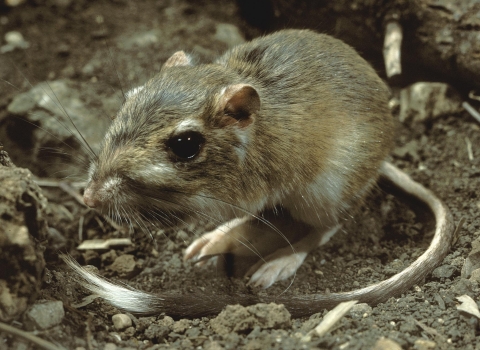Water and fish managers at the Middle Rio Grande Conservation District and the Bureau of Reclamation are preparing for intermittent river conditions and possible river drying in the Albuquerque area and are taking action to support the endangered Rio Grande silvery minnow. While the heavy rain in the last half of June offered a brief respite from the ongoing drought, hot and dry conditions have returned to most of New Mexico. Drying could begin in the Albuquerque area in late July or early August.
After the spring runoff ends, stretches of the Middle Rio Grande south of Albuquerque often dry during the hottest summer months. This year, drying began on June 5 in parts of the river south of Socorro. The river from Cochiti Dam through Albuquerque has not dried since the 1980s due to careful coordination and supplemental water releases. However, the impacts of two decades of drought, amplified by three consecutive years of extreme drought conditions, could change that this year. For several reasons, including construction at El Vado Dam near Chama and New Mexico's Rio Grande Compact debit, MRGCD could not store water for release later in the irrigation season as it typically would do. The Rio Grande Compact is a water-sharing agreement between New Mexico, Colorado, and Texas. At this time, the only water source available is the natural flow of the Rio Grande and Rio Chama.
"The rehabilitation work at El Vado Dam and New Mexico's current Rio Grande Compact debt has prevented the MRGCD from storing Rio Grande water, which we normally would have stored for summer releases. The construction at the Dam is critical for the safety of the facility but unfortunately means the Dam is unavailable for storage until at least 2024," says Jason Casuga, Chief Executive Officer for MRGCD.
"Reclamation and our partners coordinate closely to manage every drop of water for multiple purposes. In the last two decades, Reclamation has leased about 700,000 acre-feet of water to supplement flows through the Middle Rio Grande for endangered and threatened species, which, at times, increased inflow to Elephant Butte," said Reclamation's Albuquerque Area Manager Jennifer Faler. "We remain committed to supporting agricultural and municipal uses while meeting Endangered Species Act requirements to support the Middle Rio Grande ecosystem. We continue to lease available water, but after so many years of drought, our options are limited."
Reclamation will release water to supplement Rio Grande flows in cooperation with the MRGCD and the U.S. Fish and Wildlife Service (Service) to target specific areas of the river with known silvery minnow habitat and to manage the rate of anticipated drying. The Service will be coordinating minnow rescue efforts as drying occurs.


